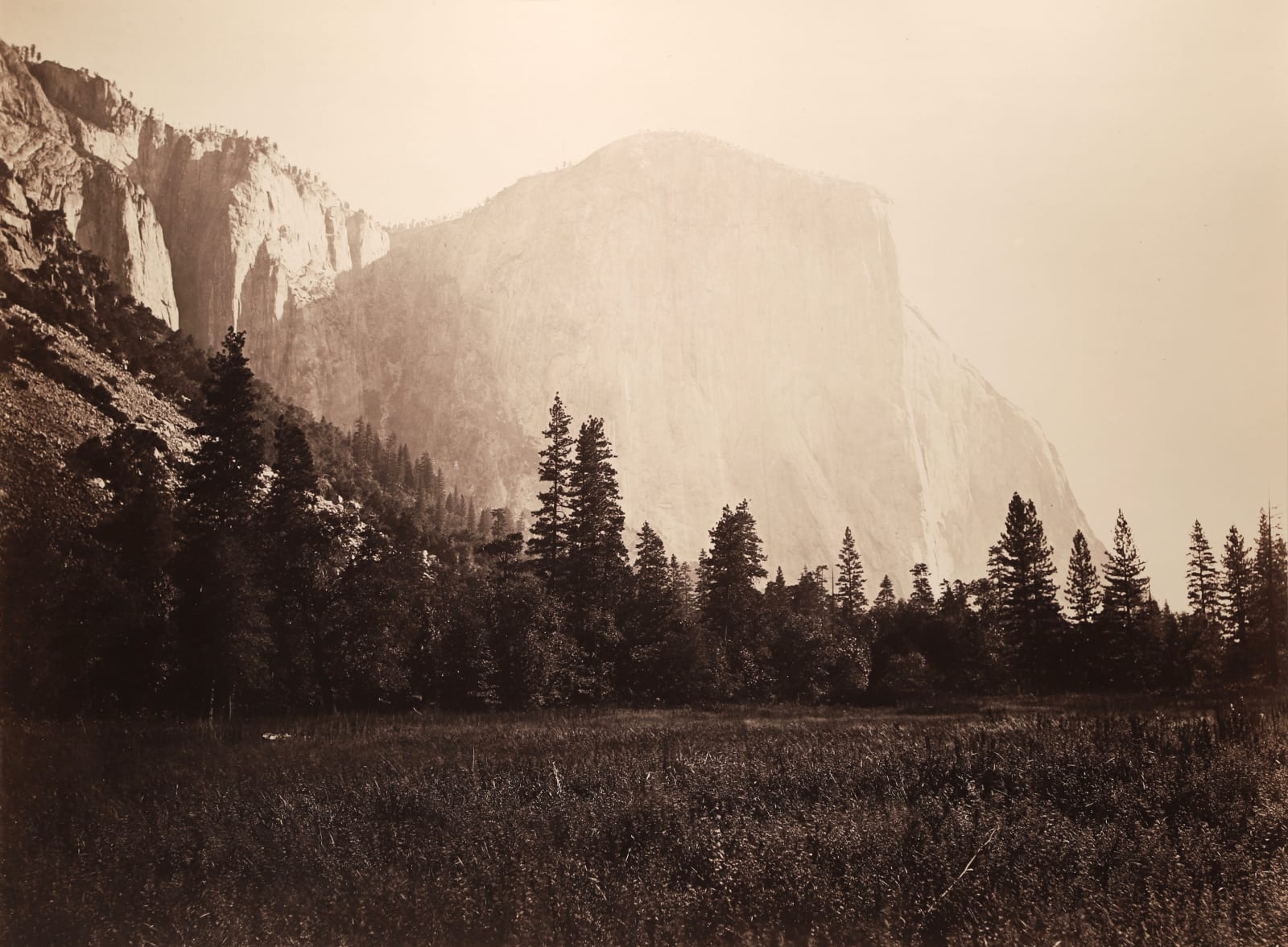Carleton Watkins
El Capitan from the Meadow, Yosemite, 1861
Albumen Silver
15 1/2 x 20 1/2 in
Sold
Further images
Titled in pencil mount verso. When discussing the orthochromatic tendency of collodion-on-glass negatives, historian Tyler Green uses “El Capitan from the Meadow, Yosemite, 1861” as the prime example of Watkins...
Titled in pencil mount verso. When discussing the orthochromatic tendency of collodion-on-glass negatives, historian Tyler Green uses “El Capitan from the Meadow, Yosemite, 1861” as the prime example of Watkins using this technical disadvantage to his artistic advantage—imparting depth and atmosphere to a two-dimensional image. Green uses this image as the inside dust-jacket of his monumental new biography of Watkins, as a fold-out poster. In this biography, Green refers to this image: “an 1861 picture offers El Capitan as a ghostly silver shadow that rose beyond a field of dark grass.” (377)
Earlier in his text, Green details this specific view at length: “Watkins’s best 1861 Yosemite pictures may have been of El Capitan… [One of them] might have been the last picture Watkins made before leaving the valley… Watkins took it standing in a meadow looking east up the valley at El Capitan. Watkins made this picture as early in the day as he could, probably at about 6:30 A.M. The sun is rising off to the right, in the east, just out of frame. The tall grasses of El Capitan Meadow fill the lower fifth of the picture. Their texture, soft and fluffy, tempts touch, especially in comparison to the hard talus pile along the picture’s left-hand side… Watkins made this picture with an exposure of many minutes, which allows the stone face to take on texture, even to become visage. Watkins knew this was a good one: he sent it to both the Paris and Philadelphia World’s Fairs. This ensured “El Capitan” would be well-known. For years hence, painters would jump off from this picture, occasionally making their crib by adding a tree or two, as Albert Bierstadt did in a circa 1872-74 painting…and in an 1875 painting” (97-98).
Earlier in his text, Green details this specific view at length: “Watkins’s best 1861 Yosemite pictures may have been of El Capitan… [One of them] might have been the last picture Watkins made before leaving the valley… Watkins took it standing in a meadow looking east up the valley at El Capitan. Watkins made this picture as early in the day as he could, probably at about 6:30 A.M. The sun is rising off to the right, in the east, just out of frame. The tall grasses of El Capitan Meadow fill the lower fifth of the picture. Their texture, soft and fluffy, tempts touch, especially in comparison to the hard talus pile along the picture’s left-hand side… Watkins made this picture with an exposure of many minutes, which allows the stone face to take on texture, even to become visage. Watkins knew this was a good one: he sent it to both the Paris and Philadelphia World’s Fairs. This ensured “El Capitan” would be well-known. For years hence, painters would jump off from this picture, occasionally making their crib by adding a tree or two, as Albert Bierstadt did in a circa 1872-74 painting…and in an 1875 painting” (97-98).







